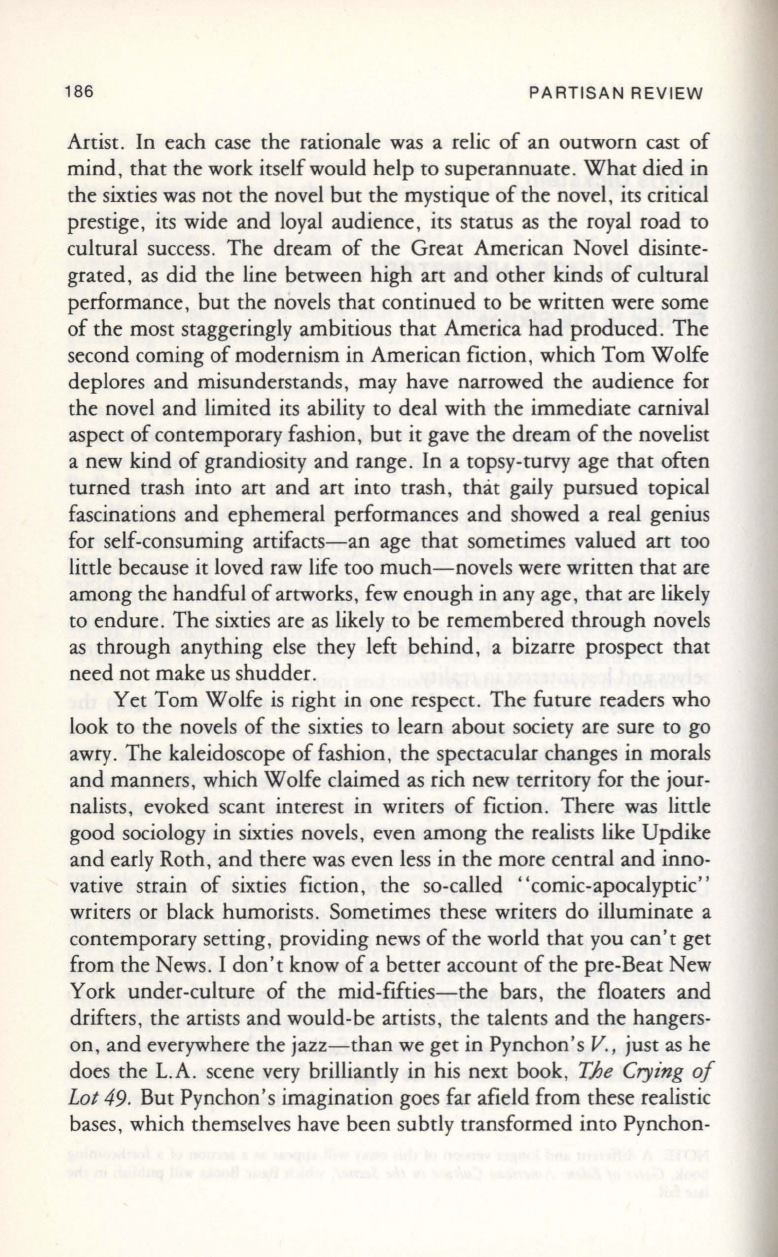
186
PARTISAN REVIEW
Artist. In each case the rationale was a relic of an outworn cast of
mind, that the work itself would help to superannuate. What died in
the sixties was not the novel but the mystique of the novel, its critical
prestige, its wide and loyal audience, its status as the royal road to
cultural success. The dream of the Great American Novel disinte–
grated, as did the line between high art and other kinds of cultural
performance, but the novels that continued to be written were some
of the most staggeringly ambitious that America had produced. The
second coming of modernism in American fiction, which Tom Wolfe
deplores and misunderstands, may have narrowed the audience for
the novel and limited its ability to deal with the immediate carnival
aspect of contemporary fashion, but it gave the dream of the novelist
a new kind of grandiosity and range. In a topsy-turvy age that often
turned trash into art and art into trash, that gaily pursued topical
fascinations and ephemeral performances and showed a real genius
for self-consuming artifacts-an age that sometimes valued art too
little because it loved raw life too much-novels were written that are
among the handful of artworks, few enough in any age, that are likely
to endure. The sixties are as likely to be remembered through novels
as through anything else they left behind, a bizarre prospect that
need not make us shudder.
Yet Tom Wolfe is right in one respect. The future readers who
look to the novels of the sixties to learn about society are sure to go
awry. The kaleidoscope of fashion, the spectacular changes in morals
and manners, which Wolfe claimed as rich new territory for the jour–
nalists, evoked scant interest in writers of fiction. There was little
good sociology in sixties novels, even among the realists like Updike
and early Roth, and there was even less in the more central and inno–
vative strain of sixties fiction, the so-called "comic-apocalyptic"
writers or black humorists. Sometimes these writers do illuminate a
contemporary setting, providing news of the world that you can't get
from the News. I don't know of a better account of the pre-Beat New
York under-culture of the mid-fifties-the bars, the floaters and
drifters, the artists and would-be artists, the talents and the hangers–
on, and everywhere the jazz-than we get in Pynchon's
v.,
just as he
does the L.A. scene very brilliantly in his next book,
The
Crying
0/
Lot
49. But Pynchon's imagination goes far afield from these realistic
bases, which themselves have been subtly transformed into Pynchon-


